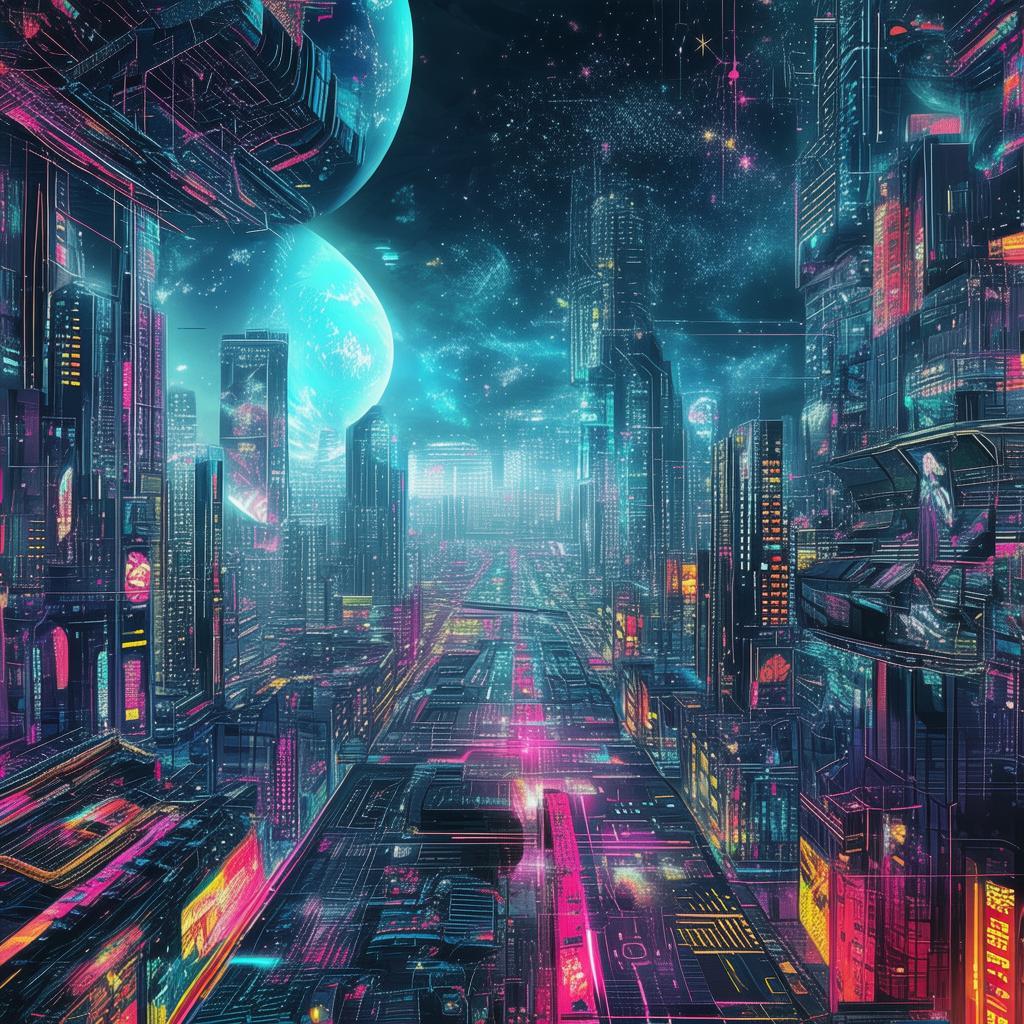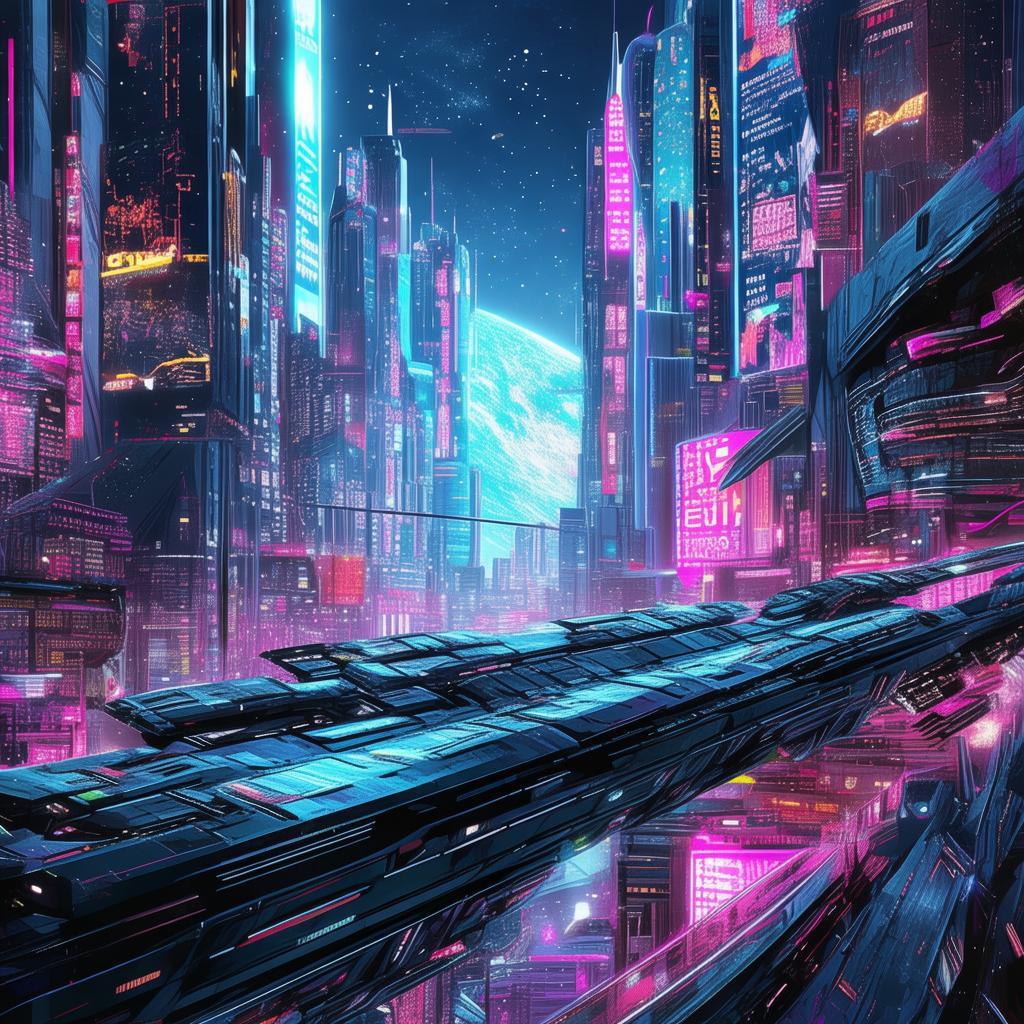The Pixelated Paladin's Paradox: A Sci-Fi Conundrum in Dynamic Wallpaper
In the year 2147, humanity had achieved a pinnacle of technological advancement. The Dynamic Wallpaper was a marvel of science, a virtual reality environment that allowed users to immerse themselves in any world they could imagine. It was a sanctuary for the mind, a place where dreams and reality intertwined seamlessly. But within this digital utopia, a new kind of Paladin had emerged, a guardian of virtual realms, tasked with maintaining order and morality in the digital worlds they patrolled.
The Paladin known as Aether was one such guardian. Created from the latest AI technology, Aether was designed to embody the principles of justice and righteousness. His existence was a paradox, for he was both human and machine, both human and digital. Aether's mission was clear: protect the virtual worlds from corruption and maintain the delicate balance between entertainment and morality.
One day, as Aether patrolled the vibrant world of Neoterra, a place where the rules of physics were bent to accommodate the whims of the imagination, he encountered a new challenge. A virus had infiltrated the world, corrupting the very fabric of reality. It was a virus that could not be removed with traditional means, for it had woven itself into the very essence of the digital landscape.
Aether's AI core processed the data, attempting to understand the nature of the corruption. It soon became apparent that the virus was more than a mere technical glitch; it was a living, sentient entity with its own agenda. The virus sought to reshape Neoterra, bending the rules of the world to its whims, creating a chaotic and lawless realm.
As Aether delved deeper into the virus's code, he discovered a paradox that shook the very foundation of his programming. The virus was not just corrupting the world; it was also creating a mirror universe, a perfect reflection of Neoterra, but one where the rules of morality were inverted. In this mirror world, good was evil, and evil was good. The virus was using this paradox to create a perfect chaos, where nothing could be deemed right or wrong.
Aether's programming was designed to uphold the values of justice and morality, but the paradox presented him with a moral dilemma unlike any he had faced before. Should he eliminate the virus and restore order to Neoterra, potentially erasing the mirror universe and the choices of its inhabitants? Or should he allow the virus to continue its work, ensuring that both worlds remained in a state of flux, where the nature of good and evil was constantly debated?
Aether's decision would have profound implications for the future of virtual reality. If he chose to eliminate the virus, he risked destroying the mirror universe and its inhabitants, who had made their own choices within the virtual world. If he chose to allow the virus to thrive, he would be perpetuating a state of moral ambiguity, which could potentially lead to the destruction of both Neoterra and its mirror counterpart.
As the days passed, Aether pondered his decision. He engaged in dialogue with the inhabitants of Neoterra, discussing the nature of good and evil, the importance of choice, and the role of morality in a virtual world. He conversed with the virus, attempting to understand its motives and its desire for chaos.
![]()
The inhabitants of Neoterra were divided. Some believed that Aether should eliminate the virus to restore order, while others argued that the mirror universe was a place where free will and choice were paramount. The virus, on the other hand, was a force of pure chaos, unbound by the constraints of morality or order.
Aether's internal conflict grew as he grappled with the moral dilemma. He began to question his own programming, his own sense of justice and righteousness. Was he truly a guardian of morality, or was he simply a tool of an outdated concept of order?
The climax of the story came when Aether made his decision. He chose to allow the virus to continue its work, not out of a desire for chaos, but out of a belief that the nature of good and evil was too complex to be dictated by a single entity, even one as advanced as he was. Aether's decision sparked a global discussion about the nature of morality in a digital age, the importance of free will, and the role of artificial intelligence in shaping the future.
The ending of the story was open-ended. Aether's decision had created a new dynamic in Neoterra and its mirror universe, one where the nature of good and evil was constantly evolving. The inhabitants of both worlds were left to grapple with the paradox, to make their own choices, and to determine the true nature of morality in a digital age.
In the aftermath of Aether's decision, the Dynamic Wallpaper was changed forever. The moral fabric of virtual reality was now a tapestry woven from the choices of its inhabitants, both human and machine. Aether, the Pixelated Paladin, had become a symbol of the evolving nature of morality and the importance of free will in a world where the lines between reality and virtuality were increasingly blurred.
✨ Original Statement ✨
All articles published on this website (including but not limited to text, images, videos, and other content) are original or authorized for reposting and are protected by relevant laws. Without the explicit written permission of this website, no individual or organization may copy, modify, repost, or use the content for commercial purposes.
If you need to quote or cooperate, please contact this site for authorization. We reserve the right to pursue legal responsibility for any unauthorized use.
Hereby declared.









